Melanie Posey is the Research Director for Cloud & Managed Services Transformation at 451 Research, a part of S&P Global Market Intelligence. In addition to managing the research team, she focuses on analyzing the evolution of enterprise IT through the lens of cloud and the associated transformation of IT consumption and delivery models. Melanie also manages 451 Research’s Voice of the Enterprise: Cloud, Hosting & Managed Services offering.

Research Director, Cloud & Managed Services Transformation
Long-standing ways of doing business are giving way to new models fueled by data-driven workflows that shift value (and revenue) from physical to digital offerings and customer experiences. In the digital economy, disruptive innovation is the rule, not the exception. Ideas are the starting point of digital transformation – reimagined business models, reengineered business operations, and new ways of engaging with extended business ecosystems of customers, employees and suppliers. Technology is a key enabler of the digital economy: applications (ideas, which execute operationally as software) and cloud technology (agile, automated, ondemand IT resources and functions) help organizations with the IT transformation needed to lean into the shift to digital and respond to rapid changes in the competitive landscape and the macroeconomic environment.
However, many organizations face the challenge of dealing with legacy workloads and infrastructure while also developing application-modernization strategies – building new applications using cloud-native tools and DevOps/DevSecOps processes with an emphasis on automation and managing heterogeneous IT (legacy/modernized, public/private clouds, VMs/ containers) in a consistent operations framework.
In this digital era, the ability to drive innovation, business value and competitive differentiation is highly cloud-dependent and increasingly application- and data-centric. How can organizations ensure that business strategies are executed in IT environments that are optimized for change and designed to yield ‘return on opportunity’ by enabling continuous, iterative development of new approaches to business models, product innovation and delivery, operational efficiency, employee productivity, and customer engagement? A holistic approach to application modernization offers a path forward.
Disruption is now the normal state of affairs in modern business, driven by the increasingly digitized business flows that are transforming business models, business operations, the customer experience and interactions with ecosystems/partners. Customers demand increasing levels of personalization and control; partners and suppliers need real-time data and integrated systems to enable collaboration, automation and seamless operations; and employees across the organization must be able to fully leverage the power of their business information as they evolve and adapt to the ever-changing ‘new normal.’ Tried-and-true ways of doing business are being swept aside as data-driven workflows become key components of business processes that shift value (and revenue) from physical offerings to digital experiences.
Strong executive leadership — a chief digital officer, a tech-savvy CIO and/or a market-savvy CIO — is the foundational pillar of any organization’s digital transformation. Leadership must play a key role in digital product/service/experience delivery and active reinvention of the business (and, ideally, the entire sector) in ways that sustain and accelerate competitive advantage through a constant process of disruptive digital innovation. In addition, business leaders must make room for IT at the digital transformation table.
The digital mindset requires new strategic approaches and organizational dynamics. In the digital economy, business success (driven by the ability to provide innovation, value and competitive differentiation) is IT/cloud-dependent and application- and data-centric. As a result, business imperatives dictate that IT stakeholders can no longer function solely within the confines of the IT department. Survival in the digital era requires new thinking about IT architecture and an expanded remit for enterprise IT that involves breaking down the traditional ‘infrastructure vs. applications’ and ‘IT operations vs. application development’ silos. The technology needed to enable innovation at scale must bring together extended business ecosystems of people (employees, partners and customers), locations (digital supply chain hubs and edges)

and platforms (cloud resources, data repositories, data tools and business applications) in an agile, scalable fashion. The digital economy changes the way business gets done. Products, services and business processes are modular and software-based, delivering value through applications that feature data-intensive, transaction-based processes, digital interfaces to partners and distributed IT environments. Digital transformation introduces dramatic changes in business workflows, often requiring coordination among disparate IT environments and partner ecosystems, with personalization based on data-/cognitive-driven insights and dynamic assembly.
Technology plays a major role in successful digital transformation outcomes, requiring new approaches to enterprise IT and modernization of IT environments. In a recent 451 Research Voice of the Enterprise survey, nearly 60% of respondents said they anticipate that IT will become more strategic and increasingly essential to their organization’s longer-term success. As illustrated in Figure 1 below, a strategic mindset around IT makes a difference when it comes to checking all the boxes for successful business transformation outcomes – the main ones being business IT convergence and IT representation in senior management ranks. These are areas where strategic IT-minded organizations have a head start.
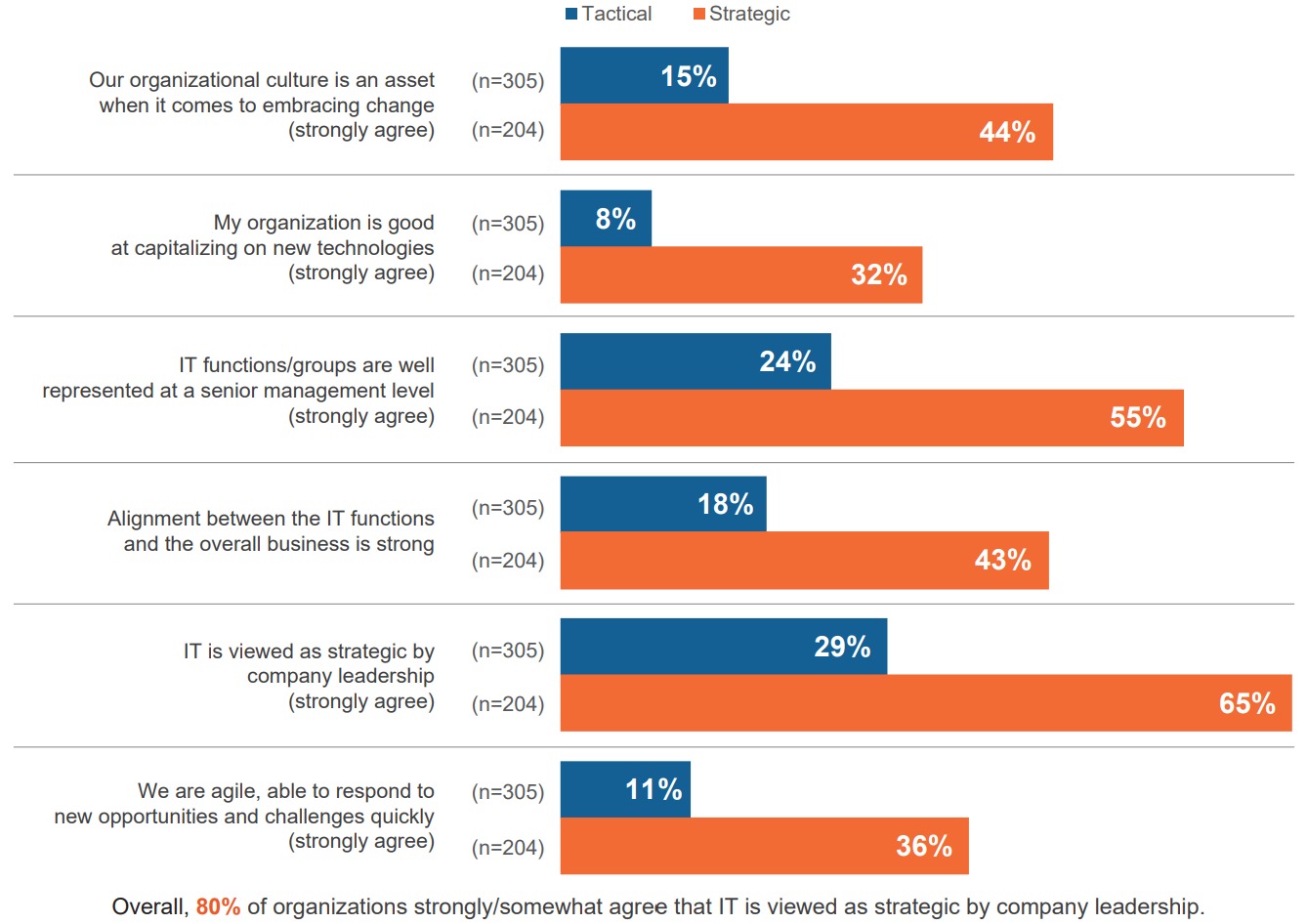
Figure 1: Being strategic makes a difference Source: 451 Research’s Voice of the Enterprise: Digital Pulse, Organizational Dynamics 2020 Q: Which of the following best describes the way IT functions and processes are organized and delivered in your organization today? Base: all respondents
Other digital-era changes on deck for IT organizations include the ability to effectively leverage technology to drive business momentum. Organizations can ramp up their business velocity by embedding data and analytics into business processes to inform new product development, obtain increased wallet share and improve customer retention. In the same vein, leveraging advanced capabilities such as AI/ML, IoT data/device management, predictive analytics, natural language processing, robotics and augmented/virtual reality can yield new and more operationally efficient product/service delivery, support and customer engagement models.
Cloud resources (agile, scalable, programmable infrastructure) can be seen as the chassis of digital business (the main supporting structure); data and
analytics are the fuel (power generation); and applications (the ideas that execute operationally as software) are the engine (the machine that converts power into motion). As IT strategy evolves in line with business requirements, digital-era IT must be able to accommodate the technological raw materials that organizations require to lean into digital disruption.
Continuous change is now business as usual. Organizations need to be confident that their IT estates can support a range of business outcomes with flexibility, agility and security. And it all starts with modernized applications. Application modernization coupled with infrastructure refresh and cloud services form an important strategic foundation for building this confidence.
Transformation is the watchword of the digital economy. However, most organizations (particularly large enterprises) don’t have the luxury of starting over on a clean sheet of (IT) paper.
The modernization journey for legacy applications is not an optional trip (but it is one that may end up being more of a marathon or 10K than a sprint). Just as every business had to retool for the internet in the 1990s and re-platform to virtual machines in the 2000s, application modernization for the digital era is a process. While flexible, agile platforms give organizations the freedom to ‘fail fast’ and the scale to ‘succeed fast,’ getting there is often a challenge because legacy applications that currently run and support the business need to be transformed. It’s not a question of ‘if’ – it’s all about when and how.
Some of the key questions that arise when organizations are updating their IT estates and deciding on the approach to their application environment include:
Although the shift to cloud is on, on-premises ‘traditional’ (i.e., non-cloud) environments remain the primary execution venue for 46% of organizations’ workloads at the moment. Public cloud, however, is making inroads into core IT, poised to emerge as the preferred workload deployment domain in the next two years. The familiar drivers of cloud – flexibility, scale, opex/consumptionbased – are attractive for both net-new and legacy modernization workloads.
Organizations migrating to cloud look to tap into a range of benefits: business-related (improved IT responsiveness and faster time to market); IT-related (flexible resource deployment and improved security and data protection); and financial (reduced capex and opex).
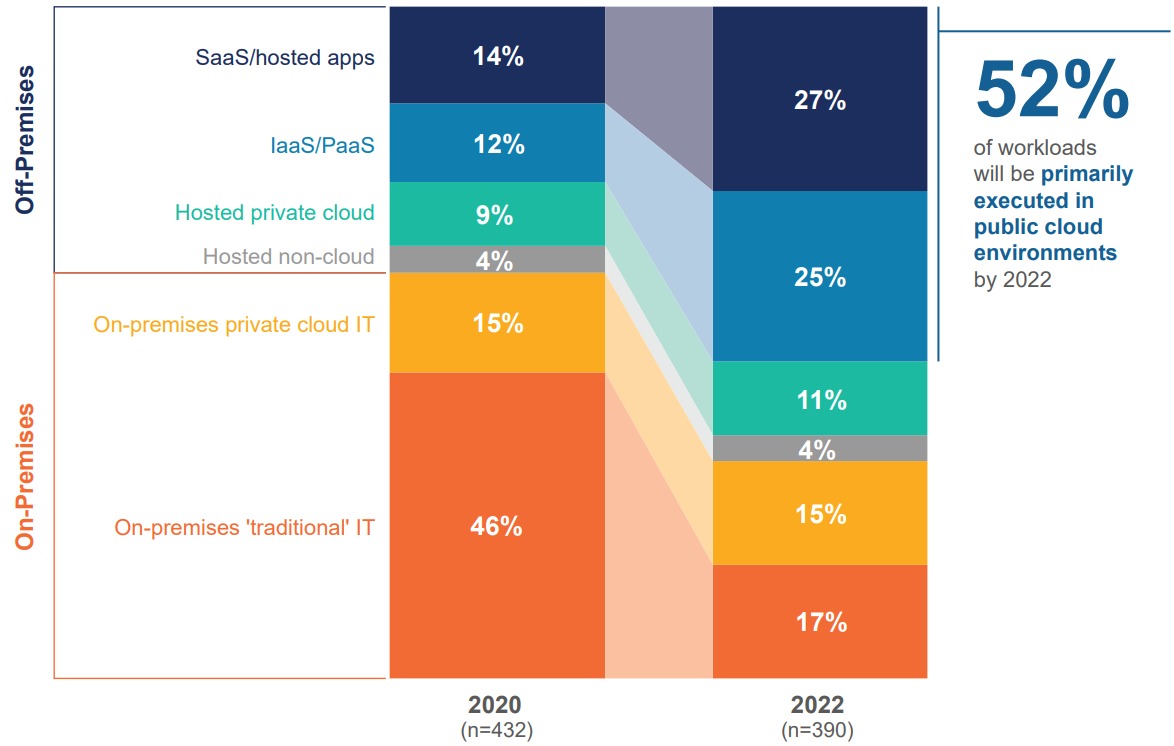
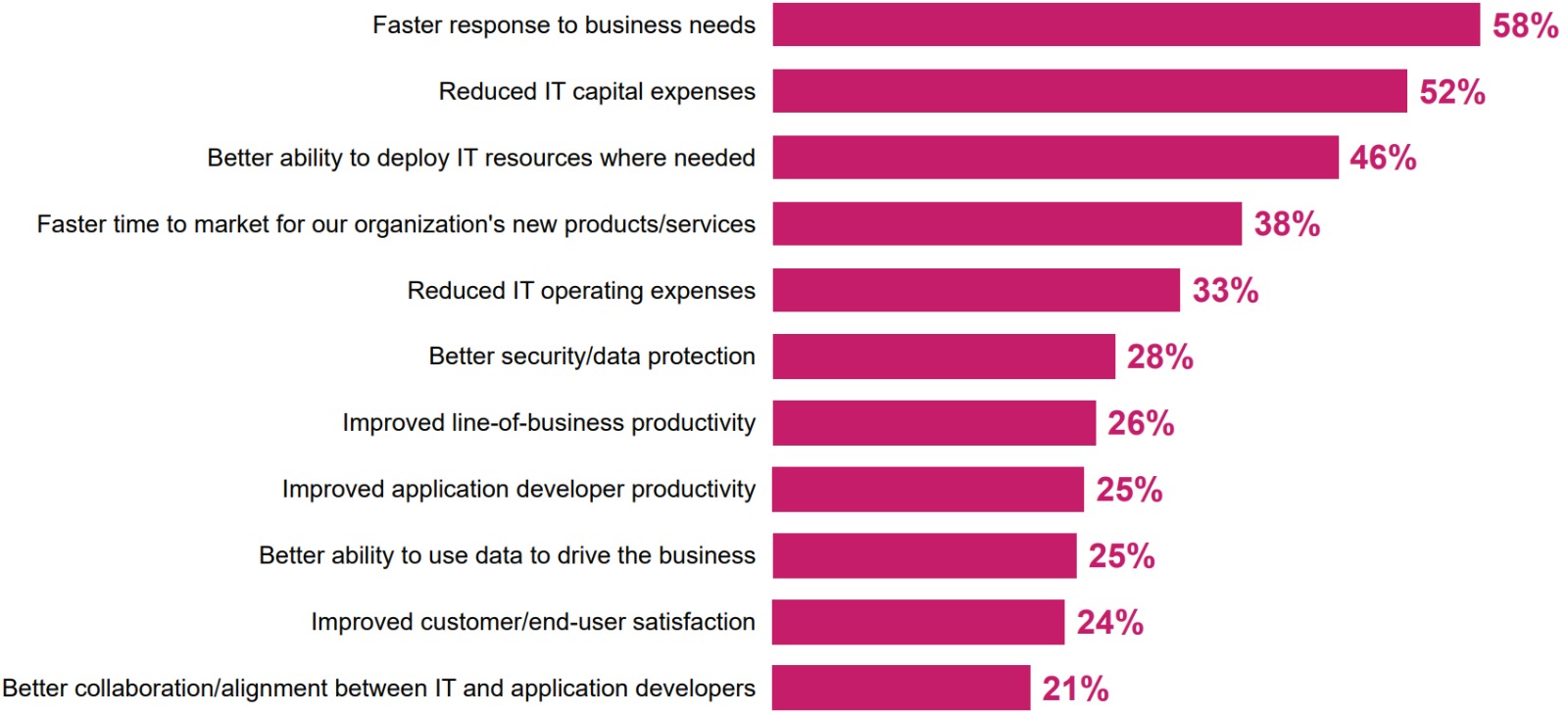
The process of modernizing legacy mission-critical applications is one of the most vexing for IT leaders. In a recent 451 survey, one-third of respondents reported that more than 50% of their current application estates need to be modernized in some way to support evolving business requirements.2 For many organizations, tackling legacy mission-critical applications has required a strong plan (and an even stronger nerve). Given that these applications are often still an organization’s crown jewels, any modernization process is not to be entered into lightly. Digital transformation cannot be fully realized if substantial portions of the application portfolio (and the supporting IT infrastructure) underpinning key business processes remain unchanged. The benefits that such modernization promises – greater agility, more scale, better user experience and lower operating costs – hardly need to be stated, but complexity, technical debt, organizational inertia and the difficulty of choosing the ‘best’ path forward from multiple potential options quite often converge in ways that inhibit such transformation.
The growing adoption of cloud-native-based efforts to refactor and shift to public clouds particularly for a plurality of the largest companies – is notable, and is a trend we will continue to pay close attention to. Indeed, C-suite executives in large organizations point to cloud-native as a weapon to counter variables such as uncertainty, rapidly changing market conditions and capex constraints.
While the nature of exactly what a ‘legacy mission-critical application’ is varies widely (and is not necessarily a 50-year-old app written in Cobol and running on a mainframe), the vast majority of organizations are at least starting down the modernization path.
Although 52% of applications will be primarily executed in public cloud environments by 2022, the current thinking is a bit more conservative when it comes to mission-critical legacy applications. Organizations are pursuing a range of strategies, but patterns are emerging that highlight the importance of well-defined application-modernization strategies.
The first step in any transformation process involves taking stock of what exists in the current environment and assessing which parts of the IT estate require the most immediate attention. Application modernization can be approached from either an infrastructure-first or applicationcentric perspective. When choosing your path, options include:
Figure 4 below highlights 451 Research’s data on IT decision-makers and the paths they’re taking to application modernization.
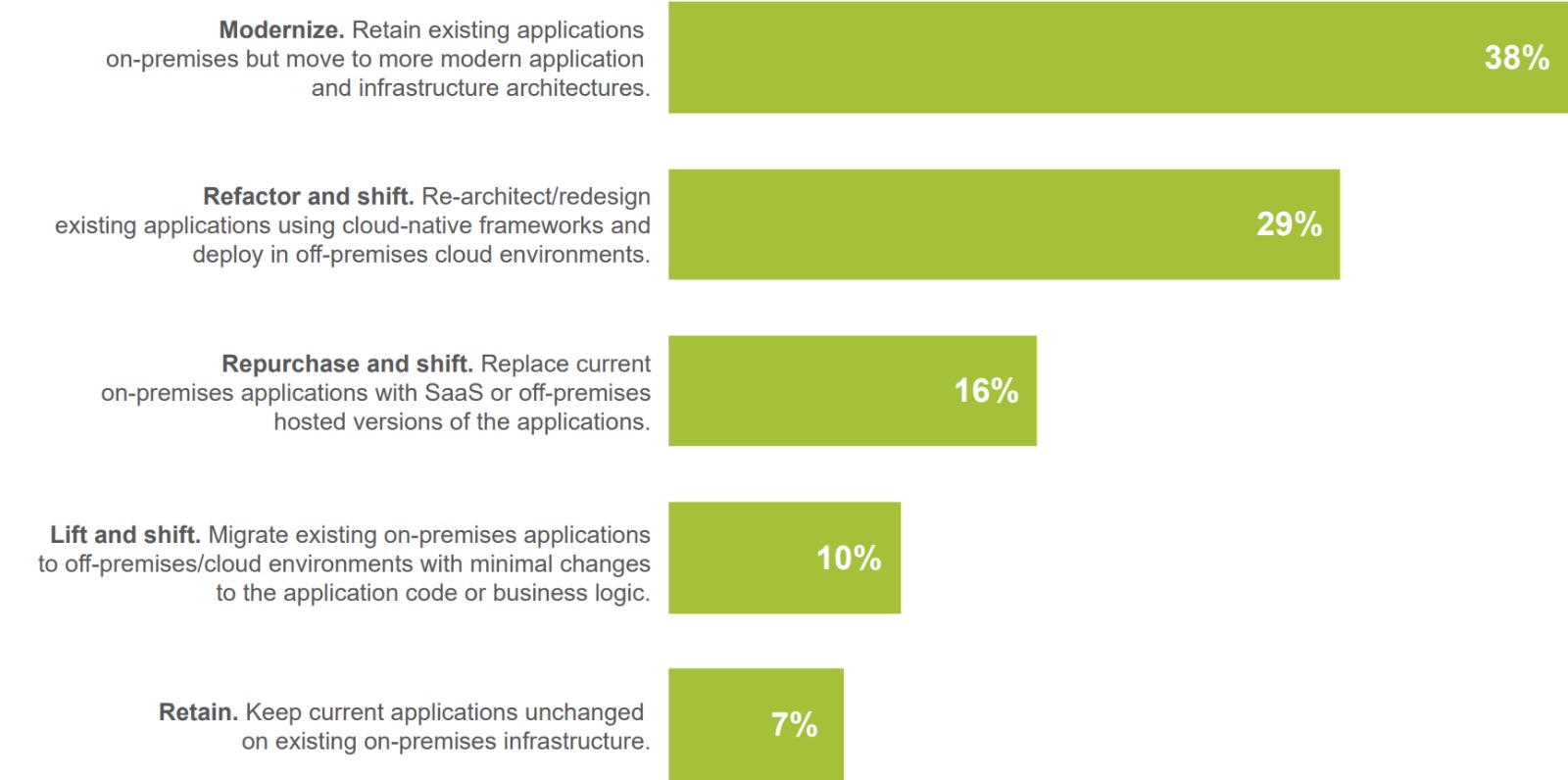
First, it’s clear that ‘doing nothing’ is no longer regarded as a strategy because only 7% of respondents indicated that their approach is to retain mission-critical legacy applications on existing on-prem infrastructure with no application changes. So, what of the other approaches? Roughly equal percentages of organizations are choosing to repurchase and shift (the ‘jump ship to SaaS’ path) and lift and shift (essentially the infrastructure-centric play of picking legacy applications and throwing them into public clouds).
However, the rehosting-oriented lift-and-shift approach seems to be losing favor, given the dwindling number of applications suited to such straightforward transformation. The lowhanging fruit has already been picked, and the larger and more complex modernizations lie ahead. Furthermore, legacy mission-critical applications tend to bring with them many interdependencies and are typically architecturally monolithic, making it difficult (if not impossible) to fully leverage cloud’s cost and agility benefits. As a consequence, many enterprises’ lift-and-shift modernization attempts have yielded limited or underwhelming results.
By contrast, the two more comprehensive modernization paths (which combined, are being pursued by two-thirds of organizations) are ramping up. Keeping the workloads on-premises and moving to newer application and infrastructure architecture (‘modernization in-place’) emerged as the most common application modernization strategy (38% of respondents). This approach works well for enterprises that want to take a more gradual approach to public cloud migration but, nevertheless, want to get started on the cloud-native path. For these organizations, hybrid/ multicloud will likely be part of the IT mix. Digital
transformation efforts lead to the creation of modularized software and composite applications with workflow processes such as databases and AI/ML functionality being distributed across different IT environments. The refactor-and-shift approach (cloud-native re-architecting of existing applications followed by redeployment to public cloud environments) is also gaining traction, with 29% of organizations opting for this modernization model. Although application refactoring is generally regarded as a time- and resource-intensive process, many organizations seem to view this as a good investment to transform what are often their most complex and most important ‘run the business’ applications. The continued evolution of the technology provider ecosystem featuring cloud-native software tools and best practices (enterprise-grade Kubernetes) is also fueling momentum of the refactor-and-shift approach. Such approaches also enable enterprises to attack monolithic applications in other ways by converting functions into internal ‘as a service’ operations or by turning features into individual microservices that can talk to each other using cloud-native service meshes.
Cloud is the infrastructure view; cloud-native is the application view. As IT transformation proceeds from rehosting to re-platforming to rearchitecting re-platforming, application modernization becomes the primary focus. As cloud-native continues its march into the market mainstream, organizations are incorporating containers, microservices, Kubernetes, serverless, service mesh and other cloud-native constructs into their application development and execution environments. Overall, close to 70% of organizations are using cloud-native frameworks and tools in some fashion and to some extent, primarily for application modernization, but also for creating new applications (see Figure 5 below).
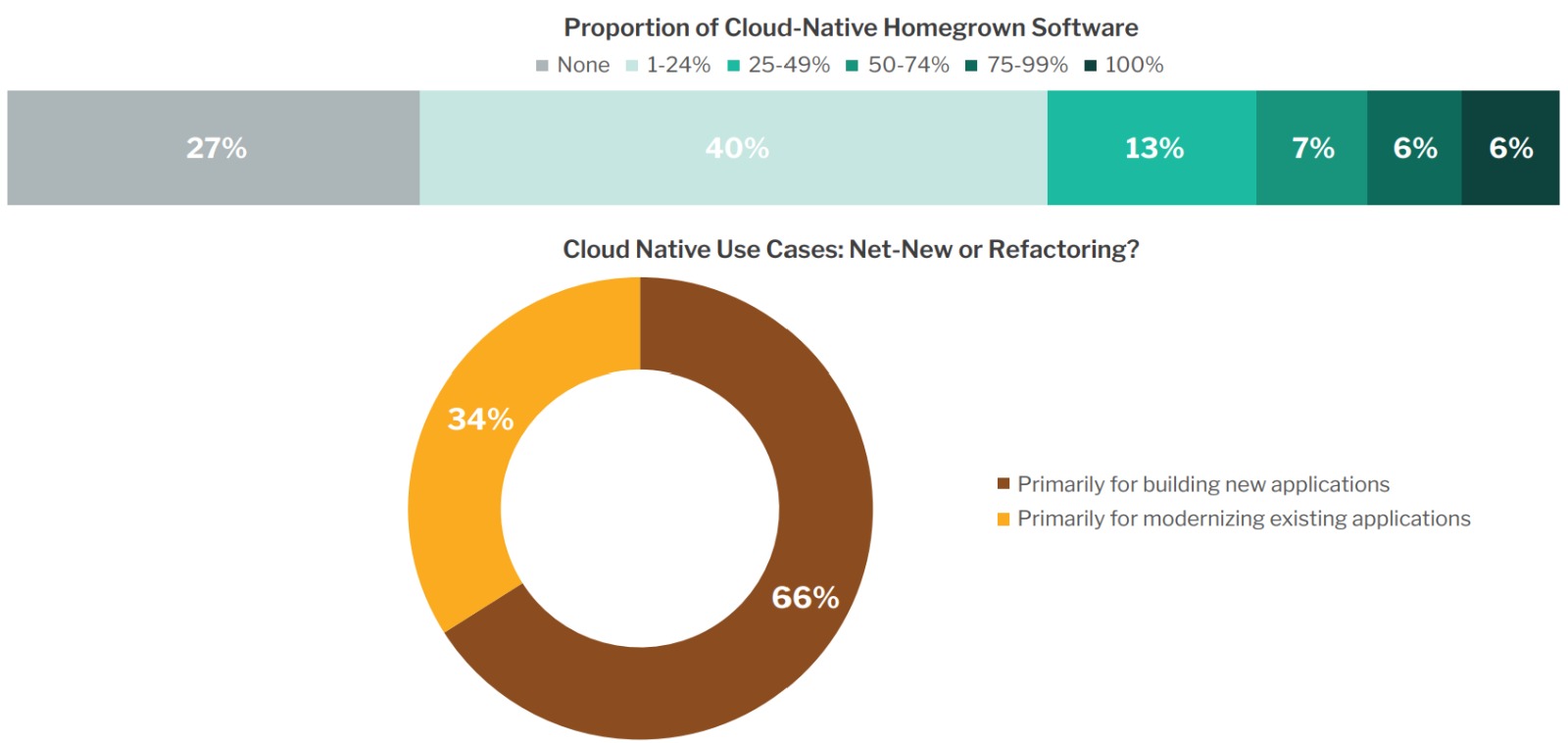
Figure 5: Enterprise software development: Common and increasingly cloud-native
Source: 451 Research’s Voice of the Enterprise: Cloud, Hosting & Managed Services, Workloads and Key Projects 2020 Q: What portion of the software developed internally by your organization is cloud-native? (n=365) Q: Is your organization’s use of cloud-native frameworks/tools primarily for building new applications or modernizing existing applications? (n=247)
The modernization journey may start with infrastructure (datacenter consolidation and IT rationalization), but it ends up being all about applications – the engine that powers digital transformation.
Key considerations to keep in mind throughout the journey include the following:
A 360-degree view that brings together business imperatives and desired outcomes, application modernization and continuous development, and IT infrastructure optimization is a requirement for digital transformation success. Application modernization is not a ‘set it and forget it process.’ Whether the journey begins with a simple application migration or a more ambitious IT or business transformation initiative, the technology elements (applications, data, infrastructure) and the organizational elements (strategy/C-suite, business operations, developers and IT) must all be on the same page – driving business outcomes.
By subscribing to Hitachi Digital Services’ Insights and providing your e-mail, you agree and consent to Hitachi Digital Services´ Privacy Policy and Website Terms of Use. Data Controller: Hitachi Digital Services Corporation. Purpose: manage Hitachi Digital Services.
Read More +
